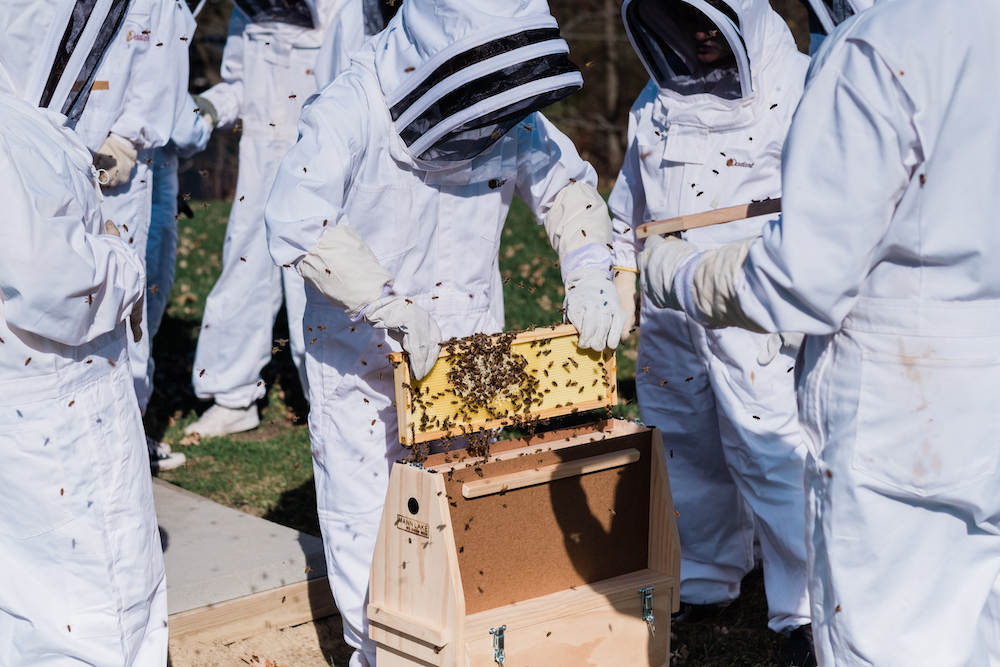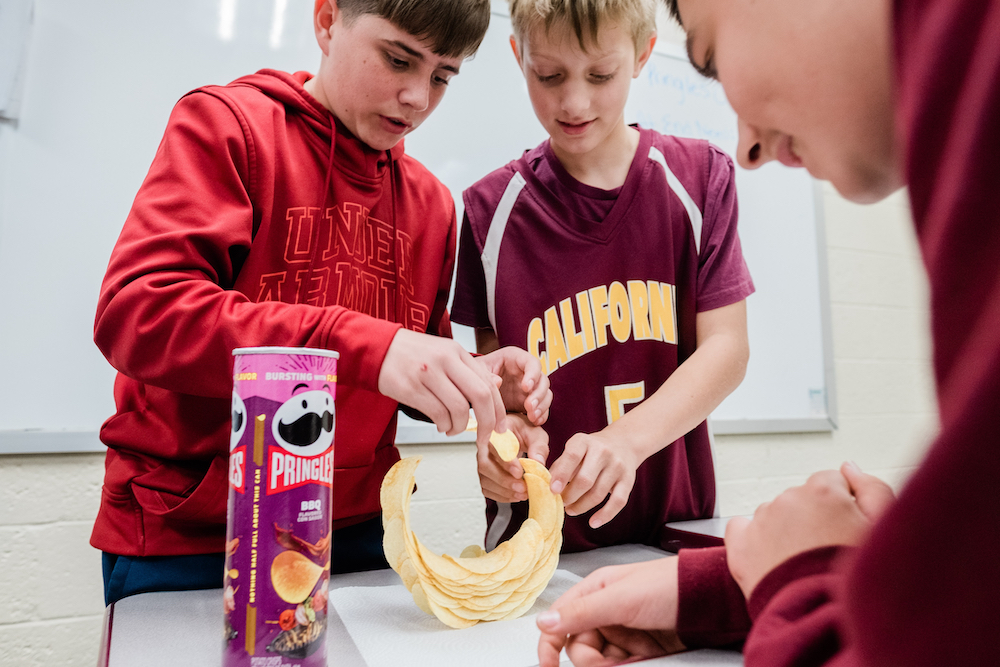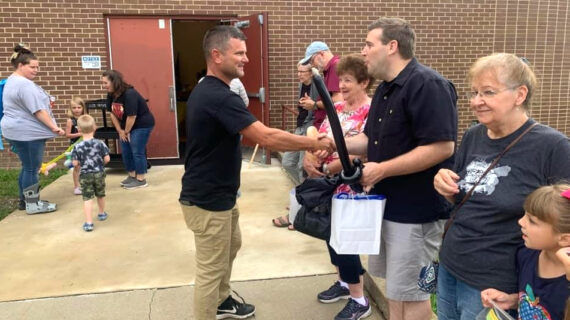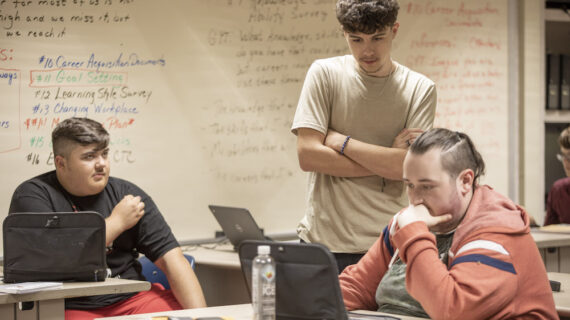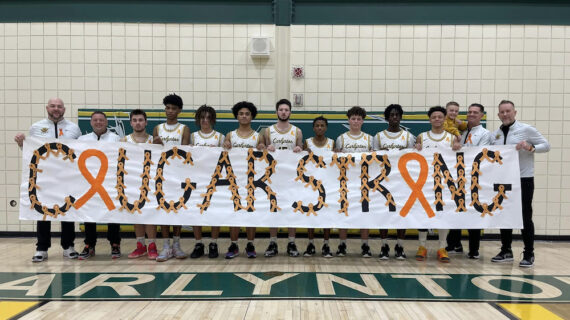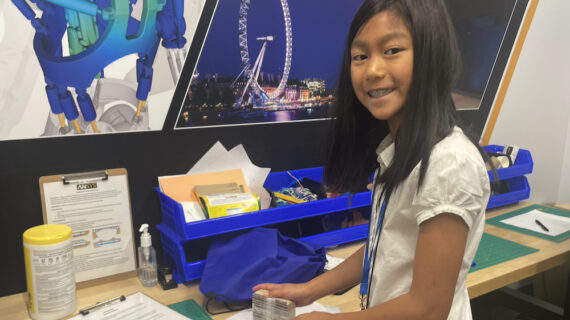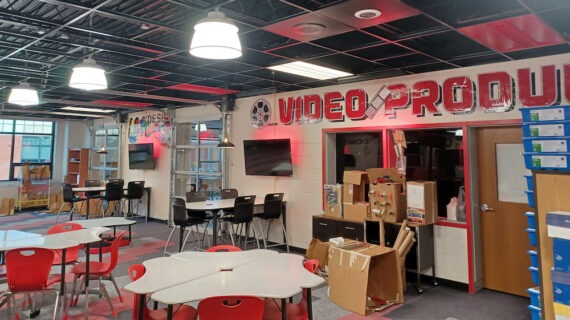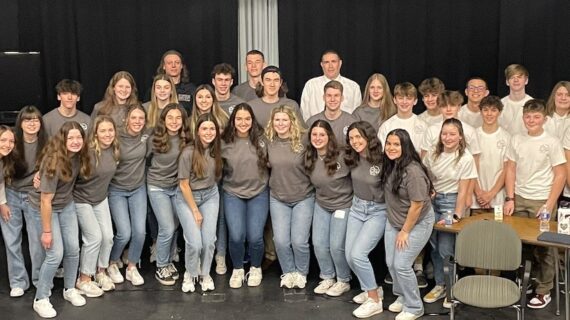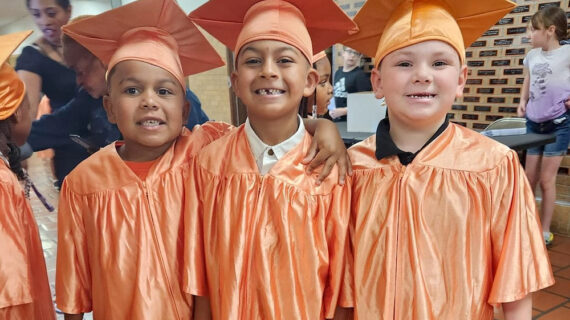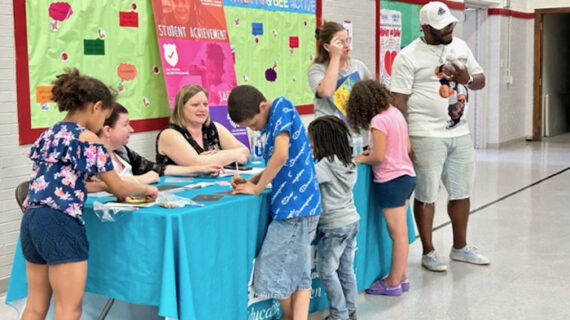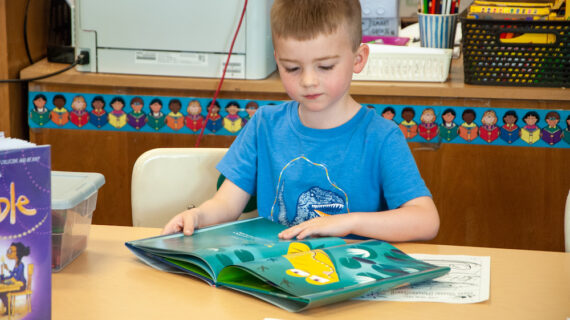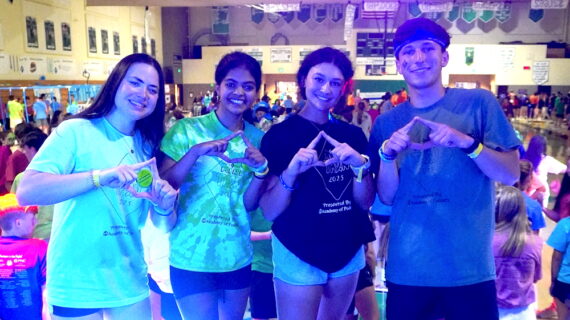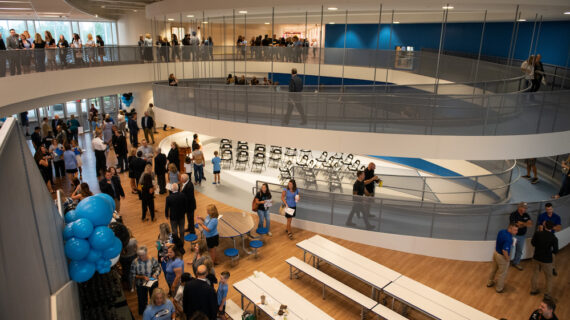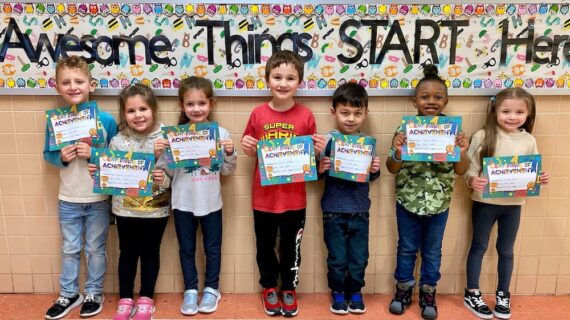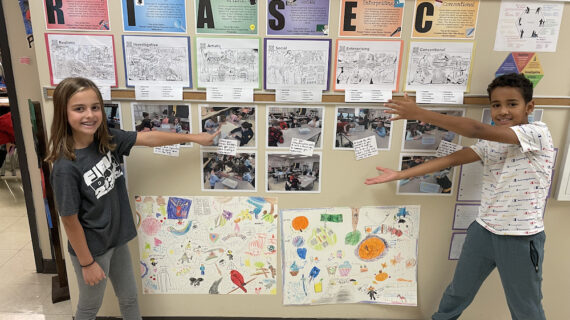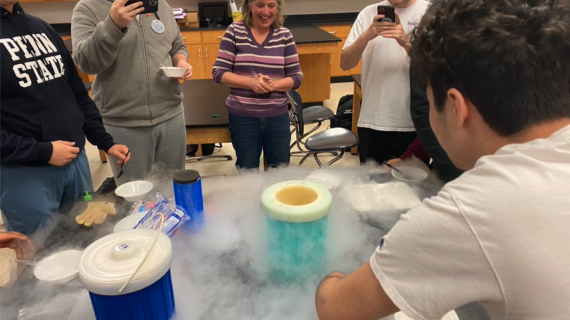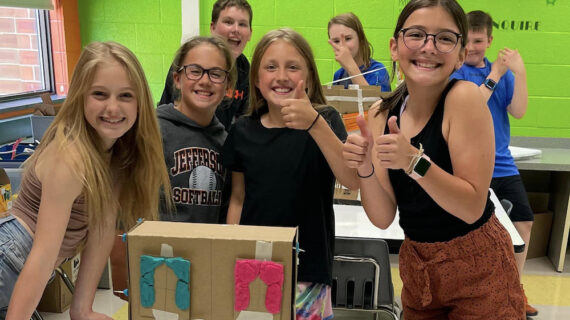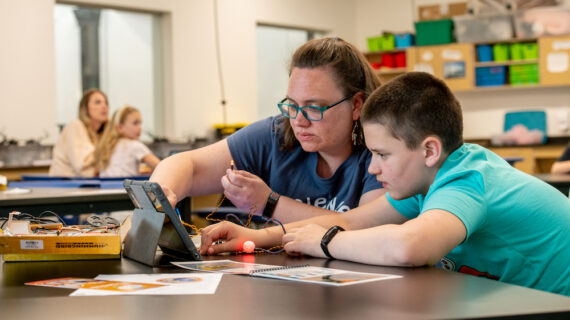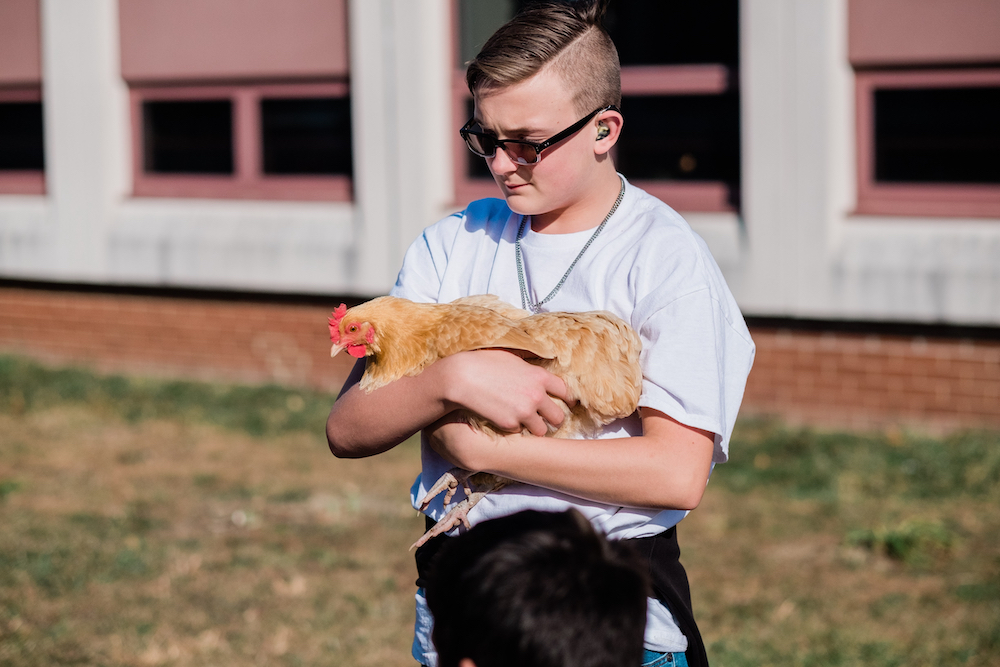
Creature comforts: With help from animals, students’ skills grow at California Area — and confidence does, too
This story is one in a series created in collaboration with the AASA Learning 2025 Alliance to celebrate the work of groundbreaking school districts in the Pittsburgh region. Kidsburgh will share these stories throughout 2023.
When spring arrives at California Area Elementary School, baby lambs come to class.
They aren’t the only animals helping students learn. From chickens and dogs to jellyfish, bees, and Norwegian dwarf goats, this rural school district near Pittsburgh hosts a remarkable menagerie.
But for students learning to read, the baby lambs are the most memorable.
“Research shows that students will develop stronger reading skills and fluency when they’re reading to animals, because they don’t feel like they’re being judged in the way that they do when they’re reading to their peers or a teacher,” says high school principal Josh Pollock, the guiding force behind the district’s animal-assisted activities.
Fledgling readers often focus on their fear of making mistakes, Pollock says. “But when they’re reading to animals, that’s gone. The only thing that they’re focusing on is the love and affection of the animal that they’re reading to. They’re practicing their fluency skills, and sometimes they don’t even realize that.”
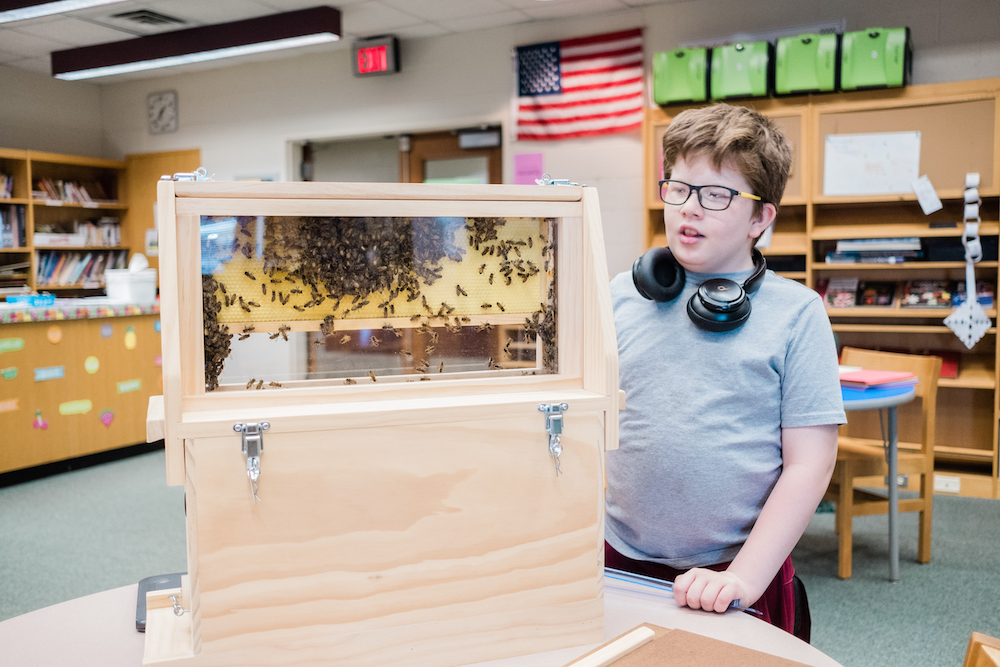
California Area’s superintendent, Dr. Laura Jacob, was raised on her family’s nearby farm. Each spring, once the farm’s baby lambs are ready to be cuddled, they’re brought to the district. For two weeks, they are entertained with tales of “Captain Underpants” and “Clifford the Big Red Dog.”
In the process, reading skills grow — and anxiety doesn’t.
Students of all ages are learning math, science, and reading while connecting to animals, to teachers, and to one another. It’s not a typical approach. But this district believes in creative experimentation.
The district belongs to the Western Pennsylvania Learning 2025 Alliance, a regional cohort of school districts working together — and with others across the country — to create student-centered, equity-focused, future-driven schools. Led by local superintendents and AASA, The School Superintendents Association, the Alliance gives Jacob a chance to discuss challenges and solutions with local and national peers.
California Area is among Pennsylvania’s smallest districts and has a modest budget. But through this kind of networking, along with strategic grant proposals and an embrace of new ideas, they have elevated personalized learning to new heights.
“The funding surely helps the process,” Jacob says. “However, we look at the resources we have at our disposal to maximize student learning. In 2020-2021, we did not have therapy dogs, but I did have access to baby lambs without any expense. We saw the incredible effect those lambs had on the children and adults during a difficult time. This gave us the confidence to continue to find animal-assisted interventions for learning in schools.”
MEET THE MENAGERIE
California Area is the rare school district where students love bees — and learn from them.
Computer science students create algorithms to study the behavior of bees living in the high school courtyard. Younger students discover the complexity of hive life in science class. Teens in the life-skills program collect honey and use it to make sweet treats in cooking class.
Other nonhuman residents at California Area serve a mental health-focused purpose. Elementary schoolers having a tough day drop by the main office and hold a guinea pig while preparing to talk with counselors.
“Once the kids are holding the guinea pig, they kind of refocus,” Pollock says. “They can calm themselves down a little bit so the guidance counselor can kind of really figure out what’s going on.”
Jellyfish are studied in science classrooms, and their rhythmic movements in tanks fitted with colored lights reflect on the ceilings. The effect calms students and teachers alike.
Ducks and chickens also straddle the line between academics and mental health support. Science classes count and measure freshly laid eggs, then cooking class steps in to whip up something tasty. Elementary students helped design the coops where the birds live, then high schoolers in vocational tech classes built them. Any student having a difficult day can request a few minutes outside with their feathered friends.
ONE DOG STARTED IT ALL
Perhaps most popular are the school’s therapy dogs. The first therapy dog at California Area, Pollock’s dog Charlie, was an inspiration for all this animal-assisted work.
During the height of the pandemic, Pollock couldn’t visit his grandparents at their assisted-living facility. But he discovered that certified handlers could bring therapy dogs to visit. So Pollock and Charlie got certified.
“It really came to me as a light-bulb moment,” he says. “Not only do patients in nursing homes need that love and affection from animals — kids in school also do.”
Now Charlie comes to school each day. A jar of treats bearing his name sits on a shelf in the main office. Students seek him out — along with the district’s other 11 therapy dogs. Like all of the goats, rabbits, reptiles and other lifeforms who call this district home, Charlie makes a difference.
“Just ask any of the kids about the animals that we have in the school,” Pollock says. “I would venture to say that every single kid has interacted with multiple animals and they would tell you how much they love them.”
These animals also build deeper connections between students and staff.
“Charlie gives me the opportunity to start meeting the students that I traditionally wouldn’t have had the opportunity to just talk to randomly in the hallway,” Pollock says. “It’s given me that opportunity to really work with them and talk with them. And now I’m not necessarily as intimidating as a person. I’m not the principal anymore. I’m Charlie’s dad.”
Want to download this story? Click here for a PDF.
